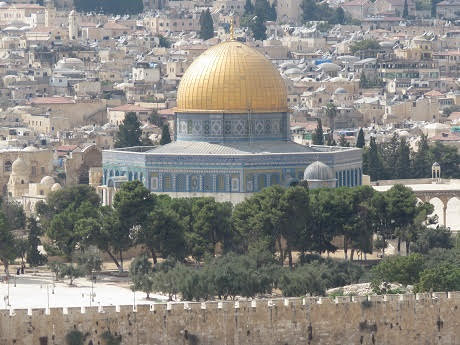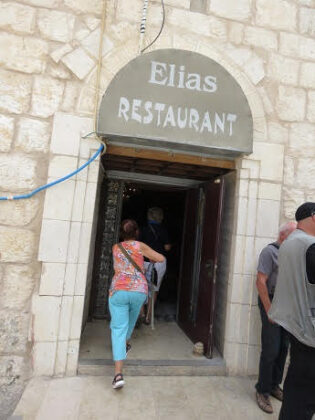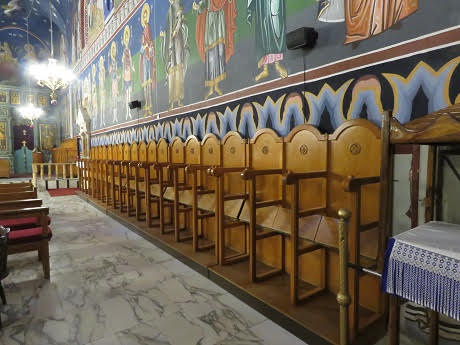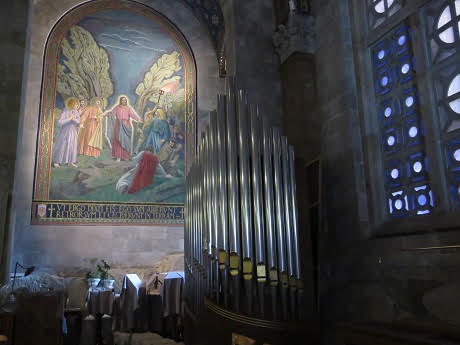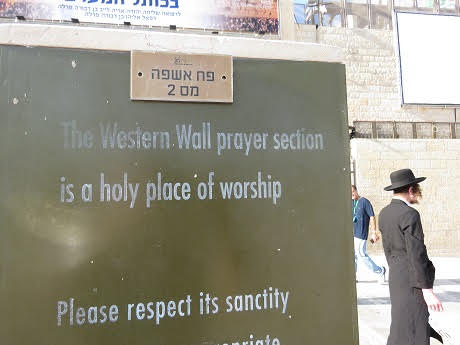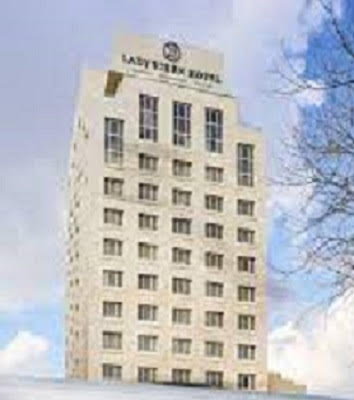By TR Robertson
Day 4 of our Mid-East trip found us boarding our tour bus for a 33-mile trip to Israel’s capital city of Jerusalem. This city is a holy city for Judaism, Christianity, and Islam. This ancient city has been destroyed twice, besieged 23 times, captured, and recaptured 44 times, and attacked 52 times in its 3,000-year history. Its religiously mixed population is comprised of 500,000+ Jews, 300,000+ Muslims, 16,000+ Christians and 10,000+ unclassified. Jerusalem was declared the capital in 1980, a controversial declaration. The United States accepted Jerusalem as the capital in 2017 and the official U.S. Embassy was moved to the city.
Some of the most significant religious sites in the World are in Jerusalem. Places like Temple Mount, the Western Wall, Dome of the Rock, a-Aqsa Mosque, Church of the Holy Sepulcher, Via Dolorosa and in near-by Bethlehem, the Church of the Nativity are all visited by thousands of people every day. Historically, there is a 3,000-year history for Judaism, a 2,000-year history for Christianity and a 1,400-year history for Islam. The city is considered the Cradle of Christianity where it is believed to be the place of Jesus’ Last Supper with his disciples, the site of his trial, crucifixion and Ascension, the tomb of Jesus, the Garden of Gethsemane where he prayed and was betrayed and in near-by Bethlehem, the place of Jesus birth. For Muslims, Jerusalem is the third holiest city in Sunni Islam. Muslims believe that Muhammed was transported one night from the Great Mosque in Mecca to Temple Mount in Jerusalem where he ascended to Heaven to meet the previous prophets of Islam.
The first site we visited in Jerusalem on our arrival was not a religious site, but a museum of significance as a memorial to the memory of the Jews who were murdered in one of the greatest atrocities in modern history, the Holocaust of WW II. It is also a celebration to those who helped Jews escape, rescue and assist Jews throughout Europe and the Mid-East. The World Holocaust Remembrance Center of Jerusalem was established in 1953 located on the western slope of Mt. Herzi, called the Mount of Remembrance. Named Yad Vashem, the museum has grown with the modern building’s construction completed in 2005. The Harry and Judith Wilf Family from New Jersey and the Joseph and Elizabeth Family of New Jersey financially supported the building of the museum. Using artifacts, reconstructions, dioramas, film footage, videos, authentic uniforms, and the voices of survivors, history is told beginning in 1933 with the rise of Nazism to the establishment of Israel in 1948. The German plot to murder eleven million Jews was based on a 1942 meeting in Berlin, called The Final Solution to the Jewish Question. Minutes were found listing countries and the number of Jews in each country. One of the most interesting parts of the museum were the personal interviews with survivors of the “death camps” detailing what conditions they lived under, how the killings were carried out and what the Jewish prisoners were made to do to their own people. A sad reminder of what humans can do to other humans. Models of each of the death camps were scattered throughout the museum, camps like Dachau, Wobbelin, Buchenwald and Mauthausen. The pictures from these camps were horrible. One section had actual clothing from the Jewish prisoners. Reconstructions of the sleeping conditions, sections from a railroad cattle car used to transport Jews to the death camps, a glass panel in the floor with hundreds of shoes removed from the victims and hundreds of pictures throughout the museum brought the horror of what happened in WW II to life. There were also numerous pictures and artifacts from the liberation of the camps and the end of WW II. Another moving part of the museum was the Hall of Names with pictures and the names of all the victims of the death camps. Research is still ongoing on the gathering of the names. As you exited the museum the motto of Remembering the Past, Shaping the Future was a grim reminder to not forget what we had just experienced and never let it happen again. No pictures were allowed inside the museum but there are a few pictures on Wikipedia.
Back on the bus, our group headed to south Jerusalem to the Greek Orthodox Monastery of Mar Elias to have lunch at the Elias Restaurant, located next to the Monastery. Our lunch was the typical choice of Mid-Eastern foods, but you could choose a hamburger, which was just a hamburger patty with nothing else, instead of chicken. After lunch we visited the 6th century Monastery. There are several stories surrounding the Monastery. One says Mary rested with baby Jesus under the hackberry tree in front of the Monastery, when she was fleeing Bethlehem to get away from King Herod who had ordered the killing of all Jewish babies. Another story says Elijah rested in the Monastery when he was fleeing Queen Jezebel. A Greek bishop named Elias was buried here in 1345 and St. Elias, the Patriarch of Jerusalem was buried here in 499 AD.
After lunch we headed back to the bus to drive to the Mount of Olives, which provides a wonderful panoramic view of the old city of Jerusalem and many of the historic religious sites. At the base of the Mount of Olives is a large ancient Jewish cemetery. The onion shaped domes of the Church of Mary Magdalene, built in 1888, could be seen on the right side of the Mount. In the distance the ancient walls of the old city could be seen as could several of the entrance gates into the old city, such as the Jaffa Gate leading to the Citadel. Further in the distance were the walls of Mount Zion and buildings where the Tomb of David was located. Temple Mount was visible, the site of Solomon’s First Temple, where Jesus expelled the money changers and the site of the Dome of the Rock. The Dome was built in 688 AD by Caliph Abd al-Malik. At the center of the Dome is the Holy Rock where Mohammed is believed to have begun his Night Journey, his footprint in the corner area. For Jews, the Rock is the site of Abraham’s sacrifice of Isaac and the site of the Holy of Holies.
After everyone had a chance to take pictures, we were once again back on the bus to travel a short distance to the site of Gethsemane, where Jesus was betrayed, arrested and the site of his Ascension. The site we visited was located at the foot of the Mount of Olives. The garden area we saw was next to the Catholic Church of All Nations, built over the Rock of Agony. The Garden of Gethsemane at this site held numerous ancient olive trees, still producing olives. There are three other sites that claim to be the Garden of Gethsemane. One is at the Church of the Sepulcher of St. Mary said to be the tomb of the Virgin Mary, one is at the location of a Greek Orthodox Church, and one is in an orchard of a Russian Orthodox church. All four sites are located along the foot of the Mount of Olives.
The final stop before we checked into our hotel was a stop at the Western Wall or HaKotel, also known as the Wailing Wall or in Islam the Buraq Wall. This ancient limestone wall is a small segment remaining from a once longer wall. The remaining wall is 1,601 feet long and 62 feet high, but only a small portion is used for prayer and the remainder is hidden from view. It is divided for prayer for men on the left side and women on the right side. Two-thirds of the 197-foot section is reserved for men. Appropriate attire and head coverings are required. Yamakas are provided for anyone needing a head covering. Herod the Great is said to have built lower section of the wall in 19 BC., the largest stone in place weighs 520 tons. The holiness of the wall in Judaism is a result of the proximity of the wall to Temple Mount. Due to the restrictions at Temple Mount, the wall is the holiest place where Jews are permitted to pray. Jews were allowed to pray at the wall after 1967 after its capture during the Six-Day War. This site, Holy of Holies, is the most sacred site in the Jewish faith, and lies behind the wall. The wall is the eastern boundary of the Jewish Quarter. Following the rules for approaching the wall we were allowed to walk in, stand next to the wall, photograph the area and write a prayer note to place in a crack between the limestone blocks. A group of young Jewish men were in the back area chanting or praying while we were in the area. The term Wailing Wall comes from the weeping of Jews over the destructions of the Temple, now occupied by the Dome of the Rock. Many rabis were at the wall praying and chanting. Armed Israeli soldiers, men and women, were in the area. All Israelis are required to perform military service, two years for women and 2 years 8 months for men. There are some exemptions to this service.
Back on the bus, we traveled to our second hotel, the Lady Stern Hotel in Jerusalem. Dinner at the hotel was provided, buffet style with numerous selections. A group of us had signed up for a light show in the old city. Boarding the bus we traveled to the entrance of the Jaffa Gate along the entrance to the Old City, where we walked to the entrance to the Citadel. The Citadel, called the Tower of David, dates to the 1300’s of the Mamluk and Ottoman empires when the structure was rebuilt. The area goes back to 37 BC when King Herod began to build walls around his residence. Inside the open area of the Citadel, rows of seats had been constructed and a tremendous light and video show appeared on the walls around the inside of the Citadel. The light and sound show was a story of the beginnings of Jerusalem and all the stages and civilizations this city has been through up to today.
Returning to our hotel after another long day, a shower and good night’s sleep awaited as we prepared for tomorrow, a visit into the old city of Jerusalem and the holy sights we had seen in movies and documentaries and a trip into the Palestine area of Bethlehem and the Church of the Nativity.


